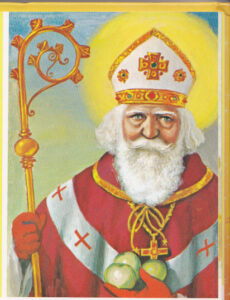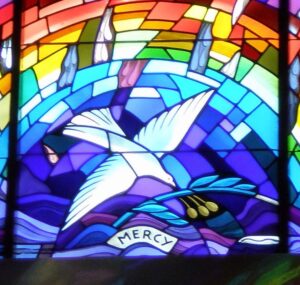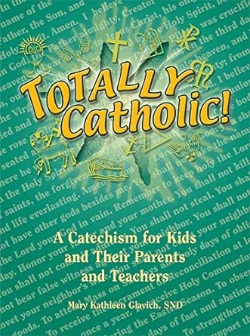 On December 6 we celebrate the feast of St. Nicholas, when I hold my annual party for local convents in the tradition of my religious community. We inherited this celebration from the Sisters in Holland who helped form us German Sisters of Notre Dame. The feast entails gingerbread bishops, apple tarts, oranges, popcorn balls, bags of goodies, the singing of “St. Nicholas Day” and “Jolly Old St. Nicholas,” and a prayer to St. Nick.
On December 6 we celebrate the feast of St. Nicholas, when I hold my annual party for local convents in the tradition of my religious community. We inherited this celebration from the Sisters in Holland who helped form us German Sisters of Notre Dame. The feast entails gingerbread bishops, apple tarts, oranges, popcorn balls, bags of goodies, the singing of “St. Nicholas Day” and “Jolly Old St. Nicholas,” and a prayer to St. Nick.
I was introduced to this feast my first year in the convent, when we usually had silent meals. Suddenly at supper, a figure with a miter and crosier appeared at the door and a creature clothed in black slithered around the floor, hitting our legs with branches. These were St. Nick, who rewarded the good, and Ruprecht, who punished those who did wrong. (Neither of these come to my party!) Through the centuries, St. Nick, a generous bishop, evolved into the gift-giver we know as Santa (Saint) Claus (short for Nicholas). St. Nicholas makes a perfect patron saint for this year of mercy that Pope Francis declared.
St. Nicholas lived in Lycia (southeast of Turkey) in the fourth century. A bishop of the diocese of Myra, during a Christian persecution he was exiled and imprisoned. Afterwards, he participated in the Council of Nicea. Bishop Nicholas’ loving concern for others (mercy) must have been extraordinary because it gave rise to numerous legends about him. One of the most familiar is about a man who could not afford dowries for his three daughters. When it was time for each daughter to marry, Bishop Nicholas threw a bag of gold through an open window where the man was sleeping. In some versions, he threw three balls of gold, which is why he is depicted with three oranges. Also, the gold landed in the girls’ shoes or stockings set out to dry at the fireplace. As a child, did you hang up a stocking?
In some countries on the eve of the feast of St. Nicholas, children put out their empty shoes overnight to receive gifts from him. At one of our schools, on the following day a child handed her teacher a note that read, “Please excuse Sue for wearing her tennis shoes today. She put out her good shoes for St. Nick, and it rained last night.”
Supposedly St. Nicholas showed mercy at other times. When three theological students were murdered by an innkeeper and their bodies put in a pickling barrel, St. Nicholas brought them back to life. According to another legend, he rescued three children who were lost and kidnapped. Even years after his death, St. Nick saved a boy who had been taken as a slave by pirates–on his feast day. Stories like these resulted in St. Nick becoming the patron saint of children.
On a journey returning from the Holy Land, St. Nicholas is said to have calmed a storm. Therefore he is the patron of sailors. More than four hundred churches in England alone have been named for this beloved saint. But the best way to honor him is to follow his example and show mercy to those in need. Advent is an ideal time to do this.
Do you know what the spiritual and corporal works of mercy are? How have you practiced one lately?








